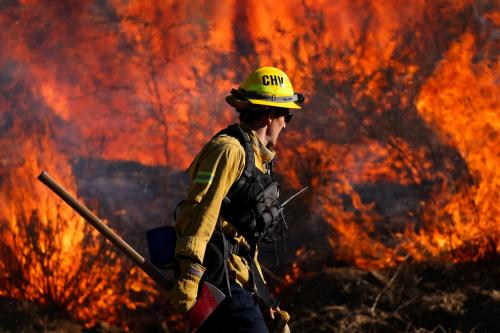“A hungry child knows no politics,” said Ronald Reagan when he approved food aid to Ethiopia in 1985. Although he had strong antipathy toward the socialist regime in Ethiopia at the time, he made it clear that food aid should not be used as an instrument of foreign policy. Sadly, well-fed adults know a lot of politics, and despite frequent references to Reagan’s dictum, food aid remains a deeply political and politicized issue. A case in point is the controversy over food aid to North Korea that broke in Washington last year, prompted in part by a report published by the U.S. Committee for Human Rights in North Korea.3 The fact that Washington was engaged in this debate a full decade after North Korea’s initial request for international assistance was interesting enough, but “conventional wisdom” that was formed as a result of this debate was even more notable for its inattention to changed realities in North Korea and its tendency to bash South Korea. More fundamentally, the controversy seems to reflect Washington’s ignorance about North Korea and deep unease about South Korea’s engagement policy toward North Korea.
Regarding food aid to North Korea, this “conventional wisdom” in Washington may be summarized as follows: (1) international donor agencies (mainly the World Food Program (WFP)) could not ensure food was received by the neediest due to North Korea’s tight restrictions on access; (2) bilateral food aid provided by South Korea and China, with very few strings attached, reduced the negotiating leverage of international donor agencies; in particular, South Korea’s large bilateral aid had the effect of gutting the WFP’s operations in North Korea; (3) no longer needing contributions from international donor agencies thanks to bilateral aid, Pyongyang asked them to pack their bags and leave.
Each of these points needs serious caveats, if not outright corrections. As Hazel Smith makes clear in her new book, Hungry for Peace, international donor agencies had a reasonably goodlevel of access after building mutual confidence with the North Korean authorities.4 Their aid targeted the most vulnerable groups such as young children, and they had good access to relevant institutions such as nurseries, schools, and hospitals. The WFP was able to conduct extensive nutritional surveys, which clearly showed improvement in children’s health over time. By late 2002, the nutritional levels of children aged under seven had become comparable to those in Cambodia and Indonesia—hardly well-fed but not in famine conditions, either. Although the WFP did not have information at the individual household level, this is understandable because it was not targeting the general population. It had access to most of the counties in North Korea, accounting for more than 80 percent of the population, and could construct a county-by-county database of socioeconomic statistics over time. As a few scholars have pointed out when comparing the WFP’s monitoring regime with South Korea’s, the WFP had over 40 resident staff and six regional offices in North Korea conducting thousands of monitoring trips every year.5 With such an extensive presence, one wonders how the WFP could fail to collect good information.



Commentary
When in Doubt, Blame South Korea: The Politics of Food Aid to North Korea
February 16, 2006